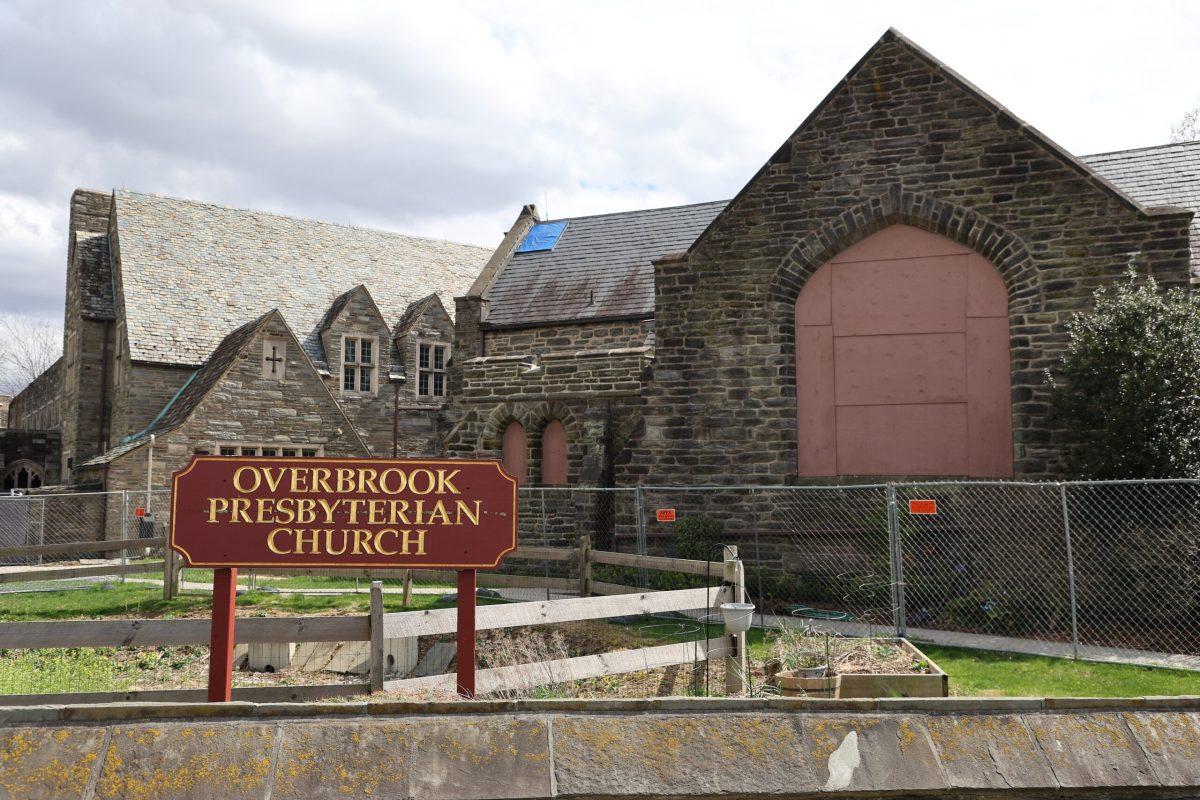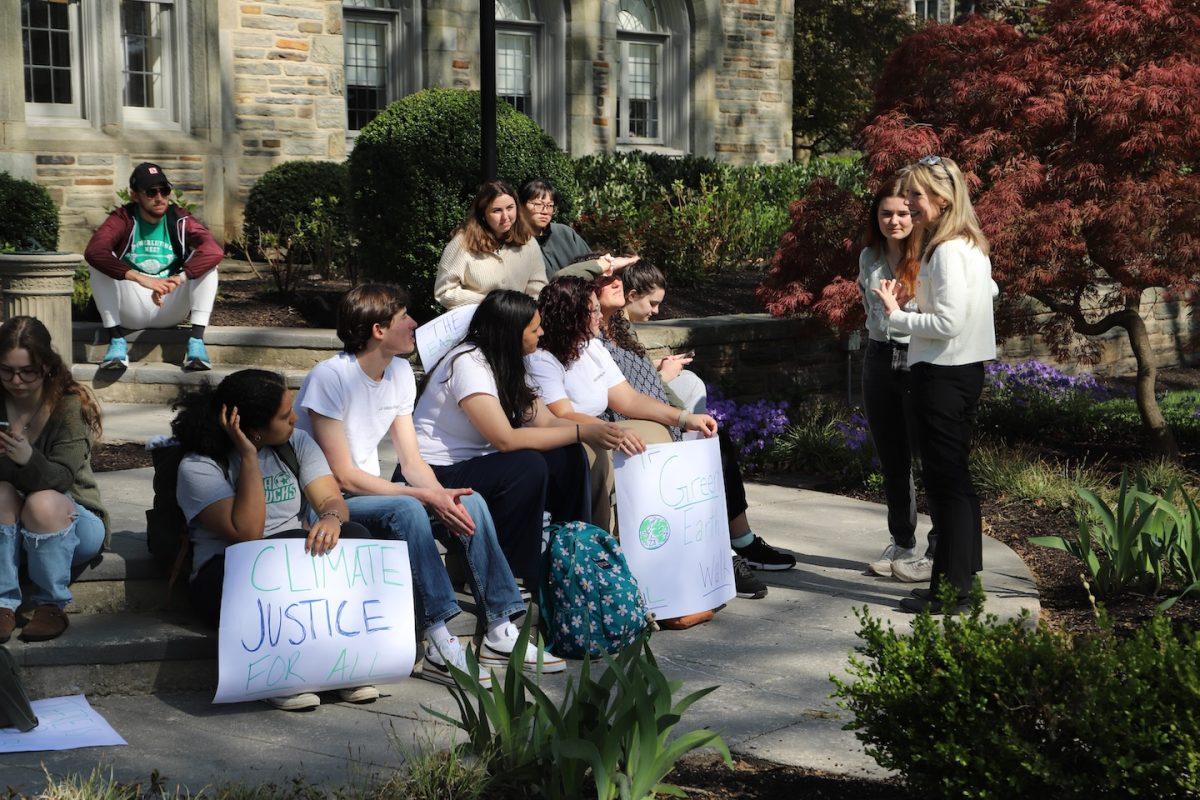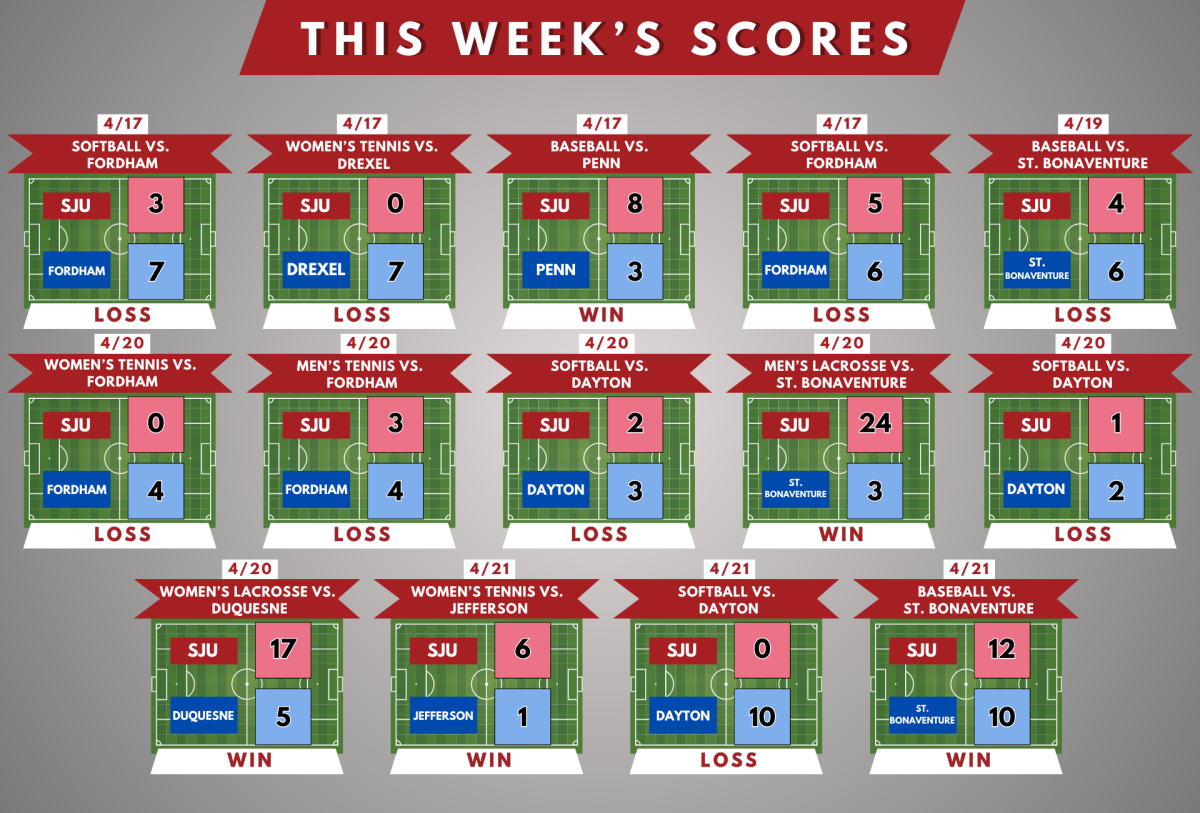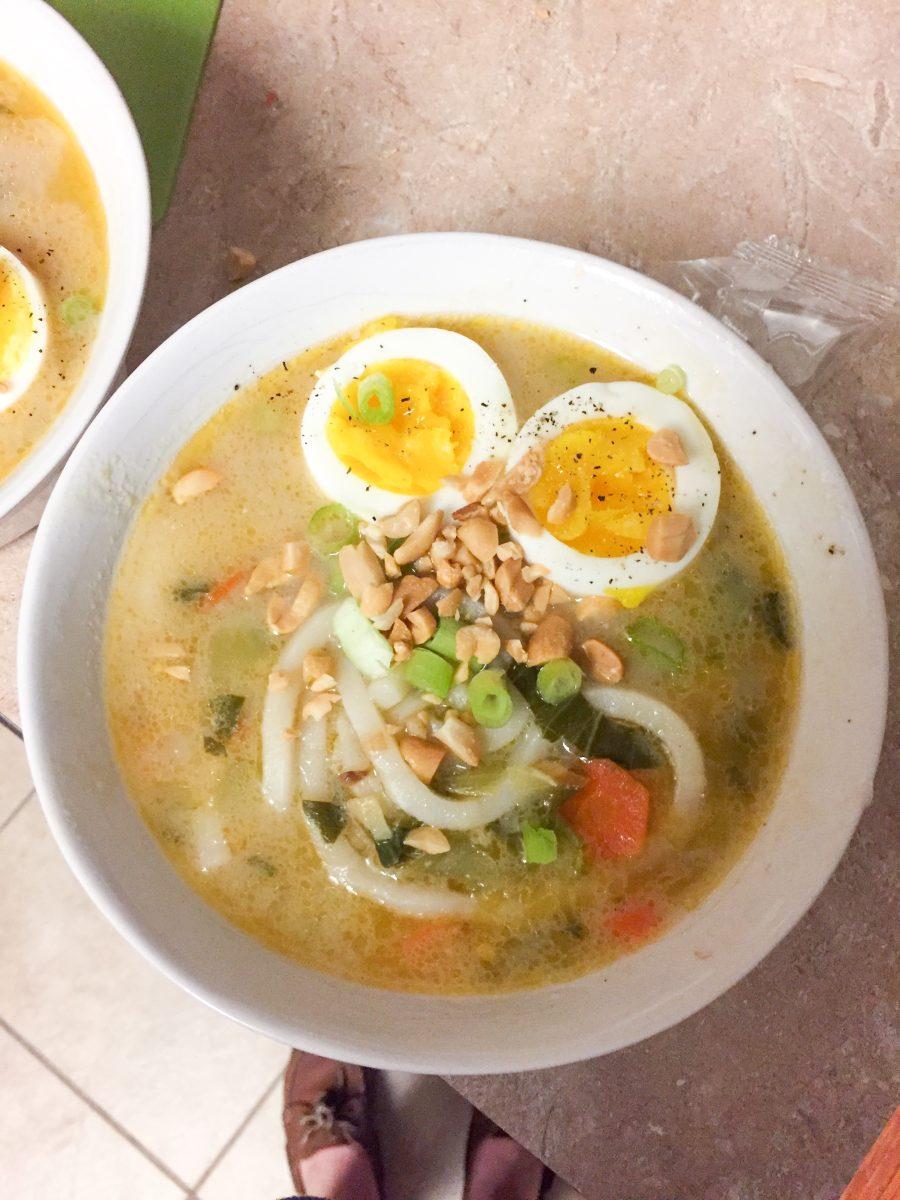Does meal delivery fit for a college student?
I do not have the most adventurous palette. As a college student on a restrictively tight budget, I cannot afford one anyway. Most meals I cook consist of some combination of rice and whatever vegetables happen to look decent at Produce Junction.
Bombarded on social media by ads for meal delivery services like Blue Apron, HelloFresh and Sun Basket—services that deliver pre-portioned ingredients and recipe cards to your door each week—I wondered if this option would work for a college student like me.
Many of these companies regularly run promotions to lure customers in at little to no cost. Armed with a gift card from a classmate and a Blue Apron promotion that would give me a week’s worth of meals for free, I went for it.
From the start, I had two main delivery-related concerns. I could have the box delivered to me on campus, but Saint Joseph’s University Campus Mail Services has notoriously inconvenient hours, long lines and is a mile away from my apartment. Having it delivered to my apartment was a risk, too, because larger packages are sometimes not delivered to my building, or I’m not notified when a package is there.
I took the risk and chose to have my Blue Apron box delivered to my apartment.Thankfully, I saw my package in the lobby of my building soon after.
In the box, beneath a layer of ice packs, were individually packed ingredients with labels that identified what each food was and for which recipe. There were three recipe cards that gave all the instructions as well as some interesting descriptions about the meal, nutrition facts and an explanation of some of the more unfamiliar ingredients.
The first Blue Apron meal I cooked was Seared Chicken & Pearl Couscous with Crispy Capers and Blood Orange Sauce. This was a tough first meal for me. There were a lot of moving parts that I did not have the culinary training to handle.
I overcooked the couscous, undercooked the chicken and burnt the capers. The blood orange turned my kitchen into a crime scene and my hands into a weapon. Eventually, after over 90 minutes—the recipe card said it would take 10 minutes to prep and 30-40 minutes to cook—I had a meal that I would describe as only okay and the messiest kitchen I’ve seen since I moved in.
The second meal, Tempura Fried Cod, was better. I just had to get over the overpowering garlic aroma in my kitchen and on my hands. My five roommates opened all the windows, turned on every fan and still may never forgive me for the lingering odor. Clearly, the Blue Apron test kitchen is not filled with college roommates evaluating the lasting effects of smells of food on people who did not choose to cook or eat the meals.
I saved both meals for leftovers to try the following days. Neither kept very well. The overcooked couscous was soggier the second day than the first so I tossed it. I don’t feel comfortable eating day-old fish so I tossed it, too.
The Udon Noodle Soup I cooked on the third day was by far the easiest. Perhaps I was getting the hang of it, but more than likely, the recipe itself was easier.
As I was cooking my meals, pretending I was a gourmet chef, I realized how far from the truth that is. I wondered if I would be better off with something like Wildflower Chef, a business in Chester County, Pa., owned by chef Emily Scott.
Scott prepares and delivers organic meals for her clients, who only need to heat them up. Heating things up is a skill I do have.
Scott’s company is like Blue Apron in that clients generally order three creative and healthy meals a week, delivered to their doors. The difference is that Scott offers her clients a detailed questionnaire that helps her identify their needs (Blue Apron gave me a few options for my meals: red meat, chicken, fish and vegetarian). Scott prepares all the meals in her own kitchen, then uses a key or a garage code to deliver them directly to the client’s refrigerator.
Scott charges a minimum of $50 per delivery for two person or family sized meals. Blue Apron, without a coupon, is $59.94 per week for three two-person meals.
Scott, having worked in and grown tired of the restaurant business, said she saw food delivery as a more personalized way to accomplish her goals. Even when she worked in restaurants that were organic or “farm-to-table,” she said that she still didn’t feel like she was doing what she was supposed to.
“If most people eat healthfully at home instead of going to a restaurant it makes a big difference in the health of themselves and their kids,” Scott said.
I asked Scott if she thought a food delivery service like hers would be successful on college campuses. She said that since her business is a small local business, she would only be able to deliver to West Chester University students and they would have to go in on a large group order to make it affordable for a college budget. So essentially, it would be less of a hassle, and cheaper, for students to do their own shopping.
Wildflower Chef does, however, offer something that could be of some value to a college student. Clients can, as I did, sign up for a free, weekly mailing list of healthy, organic meal plans complete with the same recipes Scott uses for Wildflower Chef deliveries. It’s like having a subscription meal service without the delivery and cost.
Emily Moscato, Ph.D., assistant professor of food marketing, said meal delivery services aren’t a scam, they are just meant for people with disposable incomes and fully equipped kitchens (so, not college students). For these people, Moscato said the services can help increase “food literacy” and expand their palettes.
But Moscato acknowledged that the demographic that needs more education about their food and could benefit from having prepped meals ready to cook is also the demographic that cannot afford the service.
When asked if it is even possible to make a subscription food delivery service that caters to college students with easier recipes and cheaper ingredients, Moscato said no. The prices would have to be so low that profit margins would be too small for it to be profitable.
Overall, meal delivery services like Blue Apron do not fit the lifestyle of busy and broke college students, but we’re not their intended market. Maybe someday when I have a disposable income and some more time to practice cooking I will try it again. For now, I will stick with my rice and veggies.










































